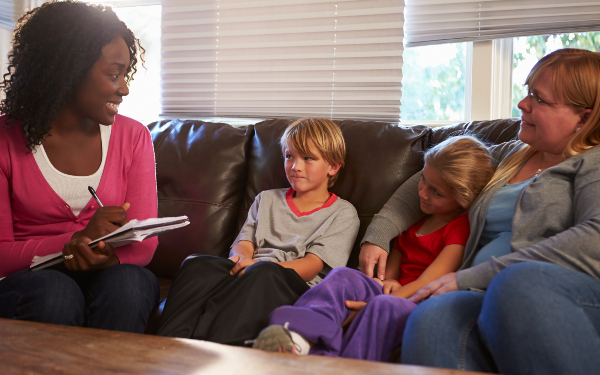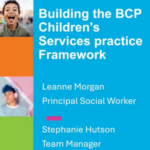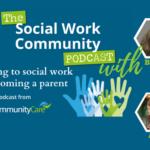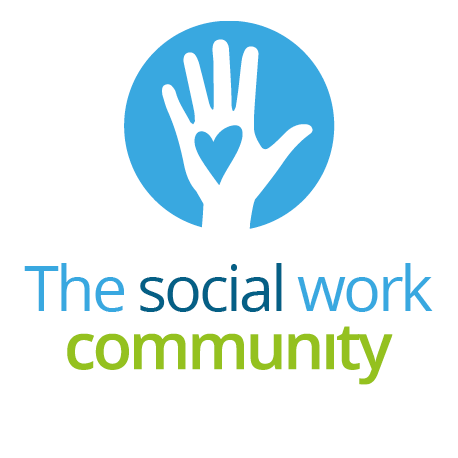
Does your experience align with the DfE’s 2024 findings, which calculated the average caseload for children's services in England to be 15.4?
- It's well below my caseload. (78%, 463 Votes)
- Yes, it's in line with my caseload. (15%, 90 Votes)
- It's below mine but not radically different. (7%, 43 Votes)
Total Voters: 596
Average social worker caseloads have fallen to their lowest recorded level in local authority children’s services in England, according to Department for Education (DfE) figures.
Based on submissions from councils, the DfE found that 15.4 cases were held per full-time equivalent (FTE) practitioner in September 2023, down from 16.0 12 months earlier and 16.6 in 2022. The department started recording average caseloads in 2017, when the figure stood at 17.7.
The rate is calculated by dividing the number of children or young people allocated to FTE children’s social workers by the number of FTE practitioners.
The average fell in every region, in 2023-24, bar one, the North West, where it rose slightly, from 16.5 to 16.6. The sharpest fall was in the East Midlands (from 16.2 to 15.0), with London continuing to have the lowest overall average caseload (13.8, down from 14.4).
Falling number of case-holding social workers
In previous years, the caseload rate has fallen due to an increase in the number of FTE children’s social workers holding cases, amid a relatively stable number of cases.
However, from September 2023 to September 2024, their number fell by 1.5%, from about 21,111.4 to 20,803.5, with the drop in the rate driven instead by a 4.9% fall in the number of cases held by practitioners, from 337,055 to 320,461.
This is the lowest number of cases held by FTE children’s social workers since 2017, when the figure stood at 316,647.
Also, the fall over the 12 months to September 2024 was far steeper than the drop in the number of children in need recorded by councils in the year to March 2024. This fell from 403,090 to 399,460, a drop of 0.9%.
Opening up of child in need assessments beyond social workers
One possible explanation for the discrepancy is a change to the Working Together to Safeguard Children statutory guidance in 2023 that permitted councils to allocate child in need assessments to non-social work qualified staff, such as early help or family support staff or social work apprentices.
Previously, the guidance, which councils must follow other than in exceptional circumstances, had stipulated that such assessments should be carried out by social workers. Cases must be overseen by a social work-qualified manager or practice supervisor, under the 2023 version of the guidance.
The amendment to Working Together was designed to enable the creation of multidisciplinary family help teams, which would be responsible for both targeted early help and child in need cases.
Part of wider reforms to children’s social care, these are designed to prevent families from having to change practitioner when they move between early help and statutory children’s social care, while also providing them with earlier and more supportive assistance to resolve challenges in their lives.
Get up to speed with children’s social care reform
 The government has embarked upon significant reforms to children’s social care, encompassing changes to family support, kinship care, child protection, children in care, fostering, care leavers and the workforce.
The government has embarked upon significant reforms to children’s social care, encompassing changes to family support, kinship care, child protection, children in care, fostering, care leavers and the workforce.
To stay up to speed, check out Community Care Inform’s comprehensive guide to the reforms, which is available on an open-access basis and will be updated as new developments arise.
Family help is currently being tested in the 10 families first for children pathfinders, before a planned national rollout in 2025-26, funded by a £270m DfE grant.
Risk concerns where social workers are not case-holders
The changes to Working Together were welcomed by the Association of Directors of Children’s Services for enabling councils to deploy their practitioner resource flexibly and focus their social workers on more complex cases.
These concerns were echoed by respondents to a recent Community Care poll, 46% of whom said that having non-social work qualified staff carry out child in need assessments “would carry too much risk for children”. A further 43% were supportive in principle, but said alternatively qualified practitioners would need appropriate training and supervision to carry out the task.
Celebrate those who’ve inspired you

Photo by Daniel Laflor/peopleimages.com/ AdobeStock
Do you have a colleague, mentor, or social work figure you can’t help but gush about?
Our My Brilliant Colleague series invites you to celebrate anyone within social work who has inspired you – whether current or former colleagues, managers, students, lecturers, mentors or prominent past or present sector figures whom you have admired from afar.
Nominate your colleague or social work inspiration by filling in our nominations form with a few paragraphs (100-250 words) explaining how and why the person has inspired you.
*Please note that, despite the need to provide your name and role, you or the nominee can be anonymous in the published entry*
If you have any questions, email our community journalist, Anastasia Koutsounia, at anastasia.koutsounia@markallengroup.com






 Bournemouth, Christchurch and Poole
Bournemouth, Christchurch and Poole  Hampshire County Council
Hampshire County Council  Oxfordshire County Council
Oxfordshire County Council  South Gloucestershire Council
South Gloucestershire Council  Wokingham Borough Council
Wokingham Borough Council  Webinar: building a practice framework with the influence of practitioner voice
Webinar: building a practice framework with the influence of practitioner voice  ‘They don’t have to retell their story’: building long-lasting relationships with children and young people
‘They don’t have to retell their story’: building long-lasting relationships with children and young people  Podcast: returning to social work after becoming a first-time parent
Podcast: returning to social work after becoming a first-time parent  How managers are inspiring social workers to progress in their careers
How managers are inspiring social workers to progress in their careers  Workforce Insights – showcasing a selection of the sector’s top recruiters
Workforce Insights – showcasing a selection of the sector’s top recruiters 

 Facebook
Facebook X
X LinkedIn
LinkedIn Instagram
Instagram
Numbers of children allocated to Social Workers is very misleading. How many families? What is the intensity of the work? eg How many of the families are in Court Proceedings? How many require parenting assessments? How many are CP etc?
In addition to this I think it is unfair to Non Social Work qualified staff such as Family Support Workers to hold caseloads. Without the correct level of training and child protection experience, there is a greater possibility that they will not identify escalating risks until a child is seriously harmed. It is a hard enough job with Social Work training and lots of social work experience.
Absolutely agree.
I have never had a caseload as low as 15, and still don’t. I am also confused why the focus is on the number of cases and does not factor in the complexity of cases.
Social work should not be based on numbers and figures.
Case load of 15/16 is nothing but a pipe dream. If you double it, and add working extra hours outside working hours it would be more realistic. Social workers just keep calm and carryon until they mentally can’t.
Social workers regularly work more than their 37 hours. I have completed 37 in 3 days because of the statutory time scales required for Child Protection.
A strategy discussion I work under time limits of 5 days if you think it requires an initial child protection meeting. A child needs to be visited asap everything else has to stop.
How many professional go into a home with out knowing what they are going to find and generally on your own. Visits are generally after 4.30 as you have to see a child on their home environment.
Work loads are un sustainable and this is why a social worker career is short lived because of burn out!!!
The figures continue not to be a true reflection when they include people in the organisation who are social workers but not case holding like team managers. Local authorities fudging figures.
Too true. Just manipulation.
I managed a service for so called ‘troubled and troubling’ children the case load was capped at six; yet a child killed themselves and simply because the, then, sw (under direction from my, then, boss) turned their phone off worn down by incessant threats of suicide …
… case loads are a poor proxy for understanding the wider systemic invalidation of both staff and children…
… it’s about the holism of services design and configuration with the NHS under s75 agreements….
… and while dated in this instance the failings were systemically driven as the child committing suicide had been implicated in the murder of the young woman in the Mabgate Murder.but refused inpatient care in hospital…
… the Mabgate Murder brings all the stuff about cuckooing and previously known cse into sharp focus today and unsurprisingly has left those impacted still asking questions about how the hell it happened in the first place….
… Prof Munroe warned back in 2009 and then again in 2011 that the single main reason for child fatality, and especially child Murder, was human performance adding that social work is a complex adaptive system to which bean counting and linear metrics aren’t suited …
… the above case is very real and the living victims remain dissatisfied with the formal and now historic responses …
… but then if what counts is only that which can be physically counted we’re not going to answer the more nuanced questions being asked….
… Yvette Cooper, as constituency mp knows all too well of the demands being faced and, now, as Home Secretary means to tackle the issues as best she can….
…. when though the holism is missing from across Government, and especially between the DWP and DHSC, how effective will her efforts, however well informed, actually be….
… getting away from Liz Kendal’s almost Norman Tebbitite approach to welfare benefits claimants maintains the inadequacies of newtonian and machine world view of children and their lives ….
… poor proxies inevitably become poor services …
Perhaps the government should focus on attracting more social workers to the profession, and in training those they already have properly.
How many children in each family on those caseloads? How complex are the cases?
If social workers weren’t already overloaded, leading to inexperienced ones making decisions on child safety, children like Sara Sharif might still be alive.
Does anyone know how a case is defined? If a family has 2 kids in care and 3 others on the CP register… How many cases is that?
Hi Paul,
Thanks for the question and apologies for not clarifying that in the article.
A ‘case’ is any child or young person allocated to a social worker.
Cheers,
Mithran
I don’t actually believe it. They find new ways to massage figures every day. No one across our locality who works in safeguarding has less than 20.
The DFE lie once again, this is not the average at all. What teams are the referring to because I guarantee you Assessment and Child Protection teams don’t average at this.
What local authority has a caseload of either 15 or 16!! I want to work there! As an asye I started on 20 and I’ve never been below that in my 8 year career to date! 2 different authorities and between 20-25 in LAC. Its not easy maintaining complex cases and families on a long term basis with those numbers.
If you’re wondering how social worker caseloads remain artificially low in statistics, here’s a concerning practice:
Not allocating siblings—despite Section 17 guidance requiring individual assessments.
Requesting “mini” Child & Family Assessments under the guise of “Information & Advice,” without formal case allocation.
The ultimate responsibility for safeguarding all these unallocated children, of course, falls on your unpaid and unrecognized overtime. The only real limit on case allocation is the Working Time Regulations, which mandate an 11-hour rest period—the only enforceable restriction employers must legally adhere to.
Until this absurdly low threshold changes, your remaining work hours—13 hours on weekdays plus a full weekend day—will continue to be consumed by workload.
This reality resonates far more with rational minds than the fictional caseload of 16 children. In truth, the time required to manage 35–50 cases explains the relentless pressure far better than misleading statistics ever could.
I refused to work any extra hours at home and certainly never at week end. When threatened with PIP as a result raised a formal greavance in response which were upheld. A colleague who worked all hours and weekends were thanked by being put on capability. It is forgotten we all have the right to a private family life under Article 8.
Agree with Kelly, local authorities fudge the numbers, senior Sw’s plus team managers counted and divided (but hold lower or no caseloads respectively) to reach an average number. Is the DFE really that stupid, clearly they are.
Truth is very little absolutely care about you and the truly talentless yes people progress up the greasy pole.
Thé DfE is clearly in Cloud Cuckoo-land.
I’ve just received this message from my daughter,(who is on reduced hours due to Long Covid). « One of our ASYEs has 44 cases at the moment 🤯 I’m on 25 (PT hours) but 4 to close so will no doubt get 4 more «
Presumably the ASYE is “benefitting” from the 10% reduction in caseload and, if full-time, my daughter would have a caseload of 50.
This is unsustainable for workers and for children and families. The government needs to focus on alleviating poverty, and providing good quality, universal, support for children, adolescents & families, at local level, instead of bean-counting & inspecting – as if managerialism ever improved anything for anyone!
I am a part time worker (18.5h) holding 25 cases. We have ASYEs in our team holding between 30-45 cases. It’s unacceptable and it’s dangerous practice.